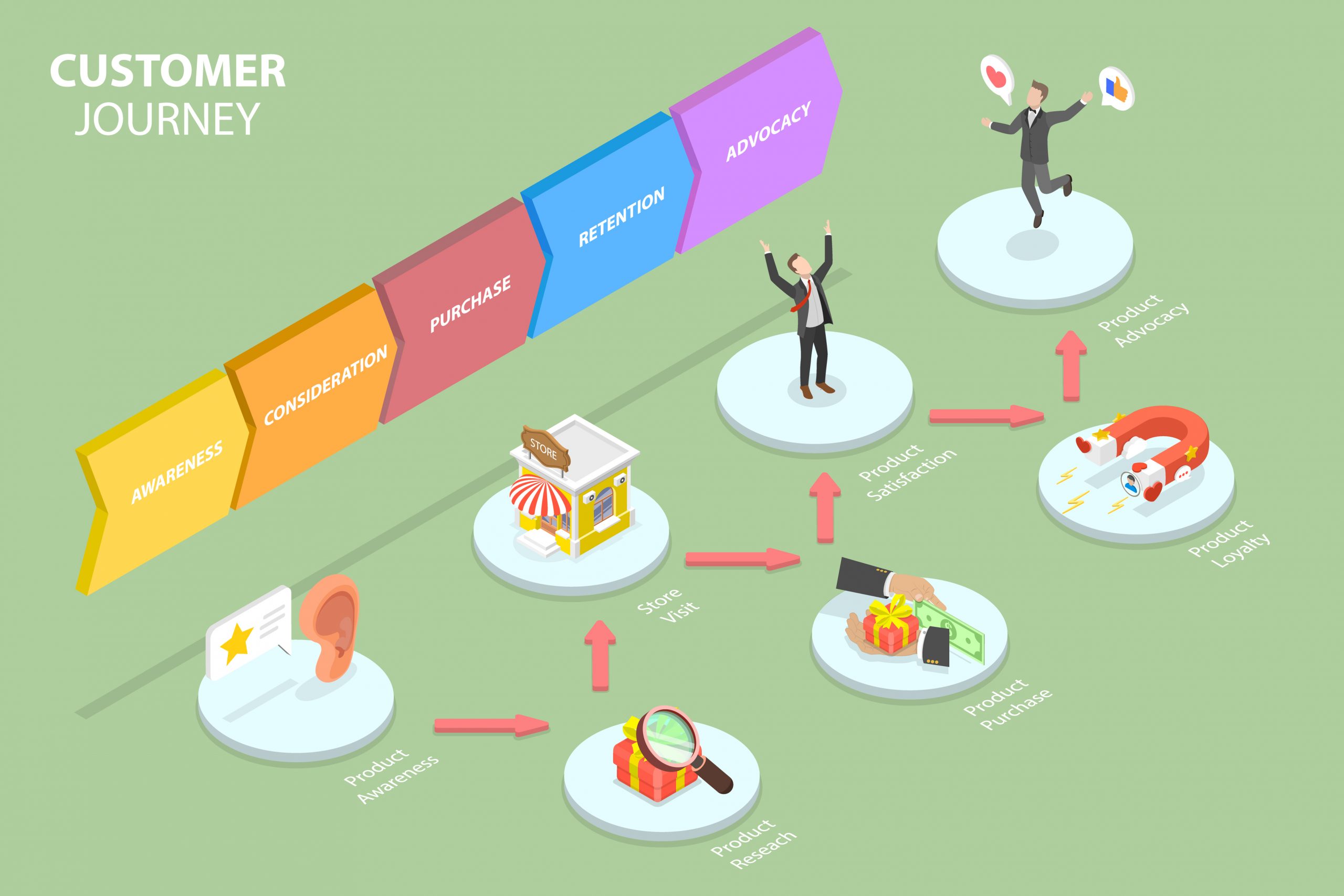
Leading and scaling startups have taken the leap into the Indian market and succeeded. However, the expansion strategy varies depending on every business’ nature, and so does their customer journey. By mapping out the customer journey, Canadian businesses are powered with actionable insights on their Indian customers’ problems, their potential solutions, and how their businesses can improve their products and services in order to appeal to these new markets.
What exactly is customer journey mapping?
Customer journey mapping is a strategic tool that helps Canadian ventures understand how their customers experience their product or service in a specific market. This technique is essential for any business that wants to penetrate any market. Thus, you can tell how important customer journey mapping is to startups who expand to an unfamiliar market. In general speaking, a customer journey map includes all of the different touchpoints (i.e., channels) where customers interact with your startups, as well as what they do at each stage.
For example, if you are expanding into India, you would map out your customer’s interactions with your company from when they first learn about your offers (products or services), gain interest in them, and all the way until they purchase them online or in-store.

Do I Need a Research Strategy to Create My Customer Journey Map?
When you are expanding your business into a new market, insights on your customers’ needs and wants are of the utmost importance. Before expanding, you should research thoroughly your customers and the target markets in order to create a customer journey map that outlines the full process of how people make purchase decisions.
Where to research for your customer journey map:
- Look at existing data to gain insight: find past focus group data, customer service logs, competitor social media platforms, forums like Quora or Reddit, customer satisfaction scores, Google reviews, and Amazon reviews– to name a few.
- Interview customers: Ask the customer directly to understand what they are looking for, and what they don’t like about the current offerings. Ask what improvements they would like to see, and why.
- Build a competitive analysis: Find out who your competitors are, their key offerings, their unique selling point, where they excel, where their weaknesses are, and what advantages you have over them.
- Gain insights through the support of groups and acceleration programs like CIAP: The Canada-India Acceleration Program offers our cohorts the opportunity to learn more about the emerging market of India and how to effectively scale your business. In partnership with our knowledge partners, we take each startup through ScaleCamp where you learn everything from customer segment journey mapping, to international market entry strategies. After ScaleCamp, we provide companies with a virtual soft-landing in India where you are connected with investors and potential business stakeholders. To learn more about CIAP, click here.
What Are the Benefits of Creating Customer Journey Maps?
Customer journey mapping helps you understand your customer by looking at their needs, goals, and pain points. It also provides you with information to identify where customer segments diverge and converge, which will enable you to create a more targeted and unique customer experience.
The benefits of researching and creating a customer journey are:
- You can discover the unmet needs of your customers: If your startup can fill in a gap that has not been tackled by another business, this is your opportunity to provide better options for your customers. For example, if your product is a new software application and requires onboarding tutorials to get started, provide a video within the help article that walks them through the process of understanding how to use your product better.
- Help you think like your customer: Put yourself in the shoes of the customer by having other members of your organization go through the process of buying your product or service. If the process is cumbersome and time-consuming, you can pinpoint where you can streamline the process.
- Allow you to personalize their experience: Once you gain a deeper insight into who your customers are, you can improve the amount of personalization you utilize when offering a promotion, pushing specific items, and creating digital ads that are accurately targeting the correct audience.

How Do I Get Started with Customer Journey?
A customer journey map is a powerful way to understand your customer’s experience. It helps you understand where they are coming from, what they want and need, and how you can help them solve their problems and move forward. Creating a customer journey map not only helps you better understand your customers but also gives you an idea of what may be holding them back from achieving their goals.
Remember to take time at this point to think about:
- Who are these customers?
- What do they want?
- How will they get there?
- When are they most likely to purchase?
When Expanding My Startup to India, How Do I Create a Customer Journey Map?
The first step is to identify who your potential customers are in the Indian market and how they currently interact with your products. For example, a fintech company may not know what marketing channels or promotional campaigns will resonate with their audience, but they can segment their customers based on language preference and then customize content to match. If a startup is launching an ed-tech solution, they might use journey mapping as a strategic planning exercise to develop relevant learning content that speaks directly to their target audience’s needs.
The layout of a customer journey map typically looks like this:
- The Buying Process: Mapping out each milestone a customer will get before reaching the point of purchasing your product/service.
- User Actions: What the customer does between each milestone such as consulting with friends and family, comparing costs, and doing more research.
- Emotions: Every product or service solves a problem or desire a customer has, and you need to acknowledge the importance of these feelings to give them the best buying experience.
- Pain Points: You want to find out what pain points they currently have and position your product or service to showcase its ability to make life easier or more enjoyable.
- Solutions: With all this information, how can you make the buying process easier, enjoyable, and beneficial for the customer and your brand?
Key Takeaways

Clientele is everything of a business. With more than 1.3 billion population in India, understanding your customer segments to set your footprint in this country is not a cakewalk. Thus, learning to speak your customers’ minds is imperative for the future expansion.
By Taylor Desjardin





